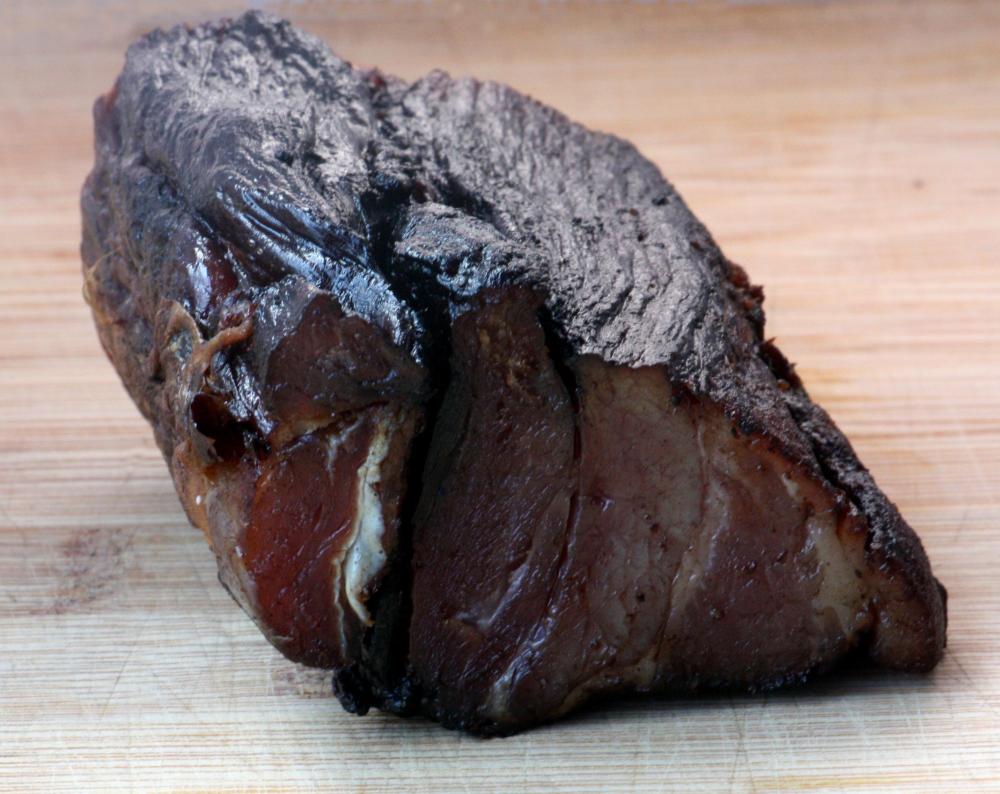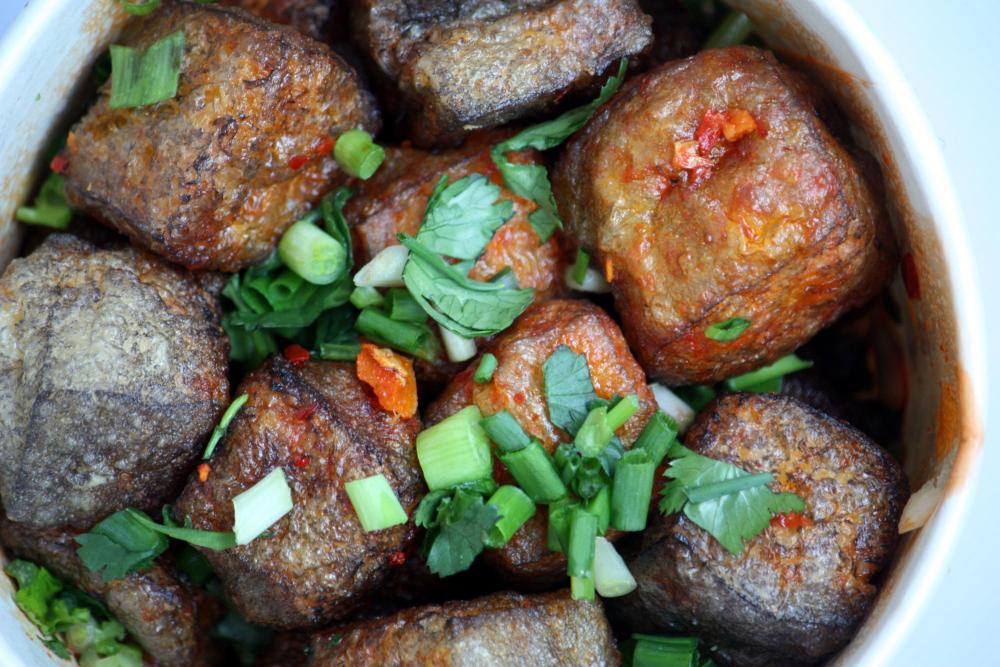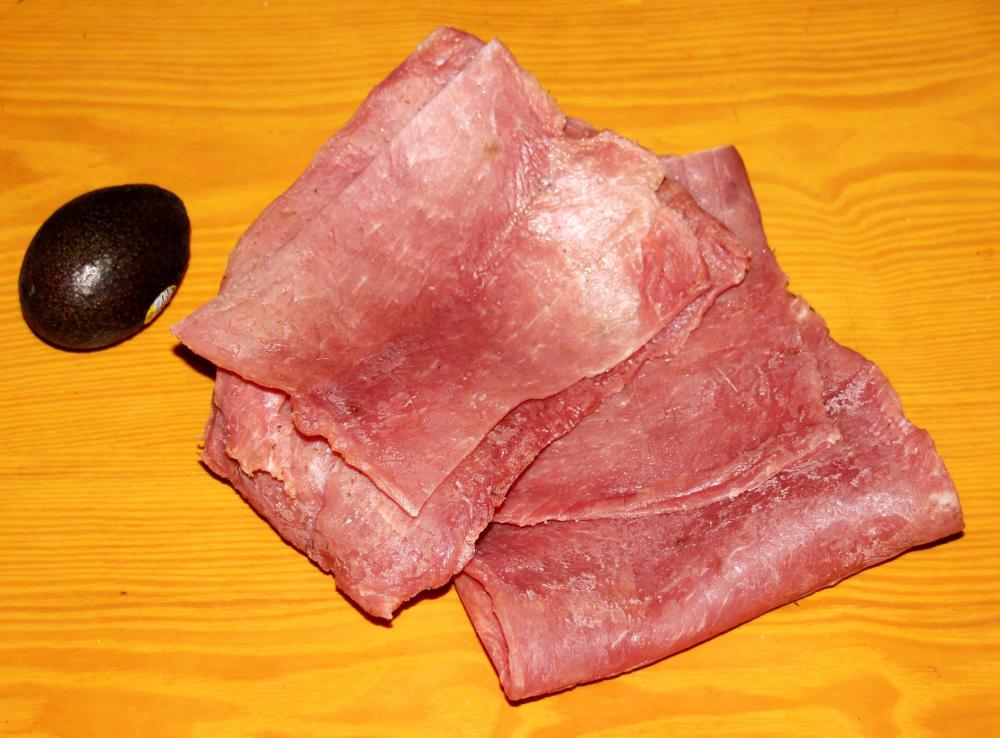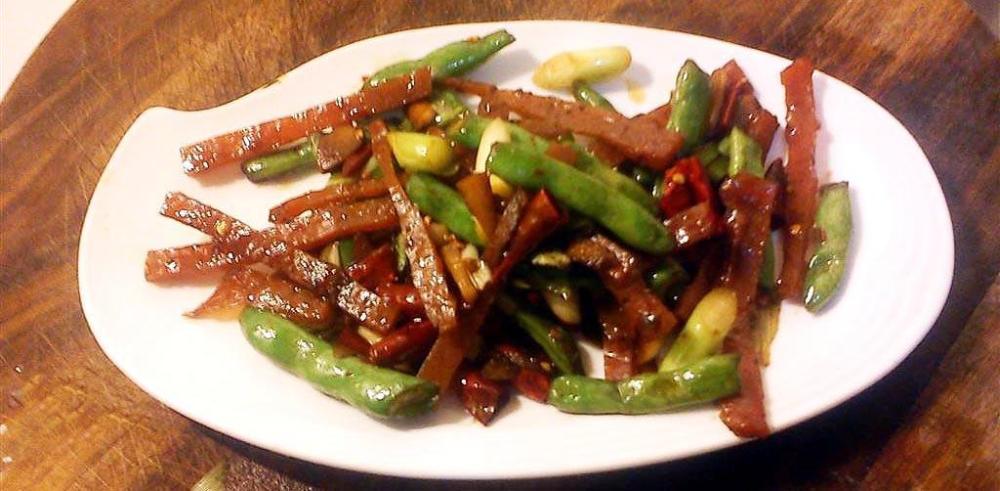湘菜 (xiāng cài) - Hunan (湖南 - hú nán) cuisine
After a year in Xi’an, I moved south to a small city in Hunan in south-central China and fell in love.
At first, I hated where I was living, but soon acclimatised. What took me no time at all to love was the food. I had no idea such food existed! What is this? Such wonderful food. Almost 30 years later, I remember every detail of the first meal I ate there. I was home! It remains my favourite Chinese cuisine. I revisit often.
Hunan food is known for its extravagant use of fresh and, less often, dried chillies, usually red but also green. In summer every flat surface - basketball courts, railway station platforms, roads and sidewalks - are covered in chillies drying in the sun.
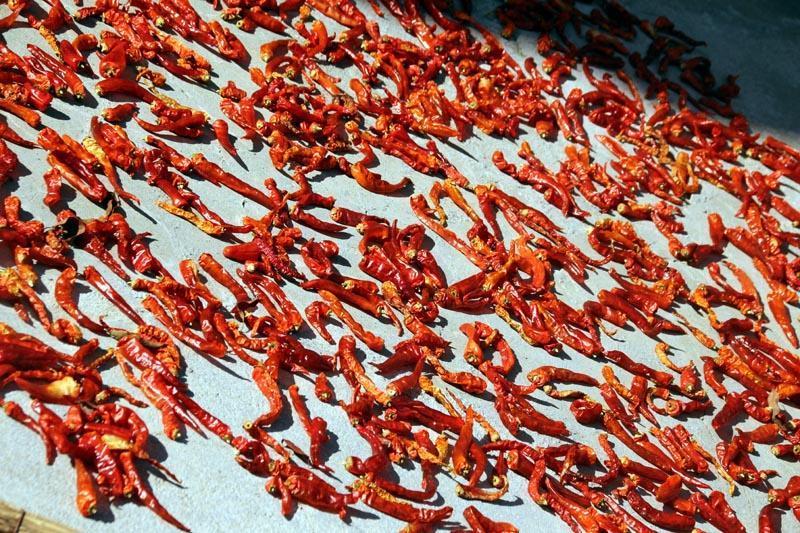
I remember a chilli-averse British friend coming to visit and telling me she wanted the fried noodles in one hole-in-the-wall restaurant near my home, but without chilli. I explained to the cook, who gave me a strange look as if to say “that will never work”. She knew me well and knew I have no problem with chilli heat. However, she did her best and wokked up some fried noodles without chilli. My friend still complained. It seemed that after decades of use, the cook’s wok was irretrievably imbued with the heat of the spice.
As I’ve mentioned on eG before, Hunan women, especially the younger ones, are often called 湖南辣妹 (hú nán là mèi), literally ‘Hunan Hot Sister’ with the ‘hot’ part referring to the capsicum, 辣椒 (là jiāo) but also the sexual innuendo doesn’t go unnoticed. The singing group, the Spice Girls are called 辣妹 (là mèi) in Chinese.
Another important feature of Hunan food is the use of smoke. Hams (腊肉 - là ròu) are usually heavily smoked. as are fish and other meats. The cuisine is often sour – pickles being commonly used, not only on vegetables but also pork and fish. Robust, pungent, spicy flavours rule.
Hunan smoked ham
Hunan smoked ham
Hunan smoked fish
The cuisine is usefully split into three styles. 湘江菜 (xiāng jiāng cài), Xiang River cuisine, 洞庭湖菜 (dòng tíng hú cài), Dongting Lake cuisine, and 湘西菜 (xiāng xī cài), Western Hunan cuisine.
The first, Xiang River cuisine is that centered on 长沙 (cháng shā), Changsha, the capital of Hunan in the east of the province. The river flows through the city centre. The food is more oily than other areas of Hunan but is fresh and aromatic. Included in this sub-cuisine is the small town of 韶山 (sháo shān), Shaoshan, Mao’s birthplace, as mentioned above. Here, Chinese tourists flock to see his former residence and the Mao museum then go on to eat his favourite dish of 红烧肉 (hóng shāo ròu), red braised pork, also mentioned in the last post. Changsha is also a bit over Mao-centric (he studied there to be a teacher and this was where he took up communism). His favourite restaurant is still there, complete with Mao posters all over the walls, but also with photos of him in the restaurant to prove the authenticity of the claim. As I remember, they didn’t look Photoshopped.
Changsha is well-known for its 臭豆腐 (chòu dòu fu), Stinky Tofu. This is fermented tofu in spices until it turns black and yes, stinks. However, like some stinking cheeses, when you get it past your nose and into your mouth, it tastes delicious.
Changsha Stinky Tofu
Dongting Lake is to the north of Hunan (Hunan literally means ‘south of the lake’) and supplies much of the province’s seafood, so that prevails. The area also produces a lot of chicken, also a favourite. But the best thing I ever ate there was lotus seeds in sugar, even though I have a very un-sweet tooth.
I lived in the west of Hunan, one of the last parts of China to be taken by the communists under Mao. It was, in the past, a wild place ruled by warlords and full of bandits. It is a beautiful part of the world and very mountainous area (the floating mountains in the movie Avatar were inspired by the real mountains there) and almost every valley has a different dialect or language. It is home to several of China’s ethnic minorities, especially the Miao and Tujia, but also Dong. This is where I took all the photos in the linked topic below. It has the spiciest food in Hunan, probably spiciest in China and is known for its sour flavours.
I showed many West Hunan dishes a few years ago in this topic, so I’m not going to have many here, but there are a few I feel I must mention.
芷江 (zhǐ jiāng) Zhijiang town in Zhijiang Dong Autonomous County was where the Japanese formally surrendered in China at the end of World War Two and is the site of what they call “Memorial Hall of the Victory of the Anti-Japanese War and the Acceptance of the Japanese Surrender”. It also is home to The Flying Tigers Memorial Hall. Although these attract many visitors, it attracts me for its signature dish, 芷江鸭 (zhǐ jiāng yā), simply the best duck dish in the world to my tastes. When I go back, as I do as often as I can, this is what I go for first.
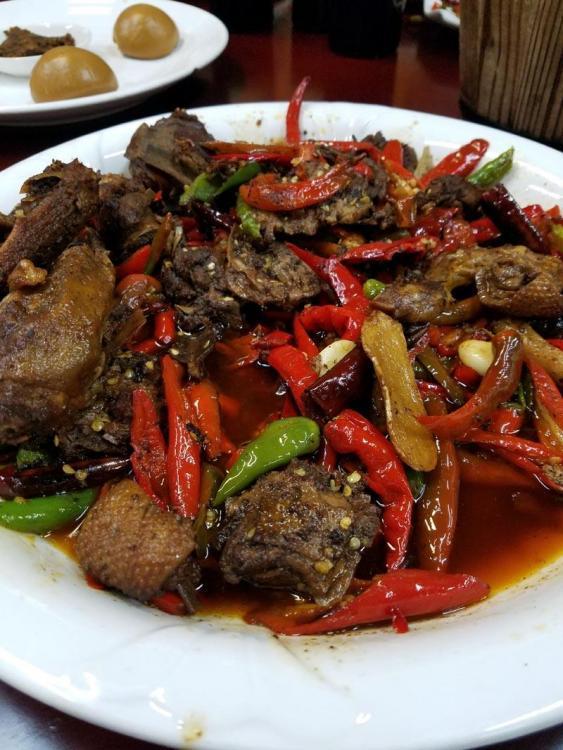
Zhijiang duck
Another, very local speciality is 沅陵晒兰 (yuán líng shài lán), a type of ham only made in 沅陵 (yuán líng), a small town in Huaihua (怀化 - huái huà) prefecture. This mild, unsmoked salt-cured ham is made using a local breed of black skinned pigs. It is to die for. Usually cut into strips and stir-fried with chilli (of course), garlic and green beans.
Shai lan ham
Shai lan with green beans
Once dish you will struggle to find in Hunan is General Tso’s Chicken as sold in every American Hunan restaurant – perhaps every American Chinese restaurant. It is almost unheard of in Hunan and when the inventor tried to introduce it there the locals were deeply unimpressed. Hunan ain’t sweet. But I love the place.
Fuchsia Dunlop's Revolutionary Chinese Cookbook - Recipes from Hunan Province (eG-friendly Amazon.com link) comes highly recommended,


